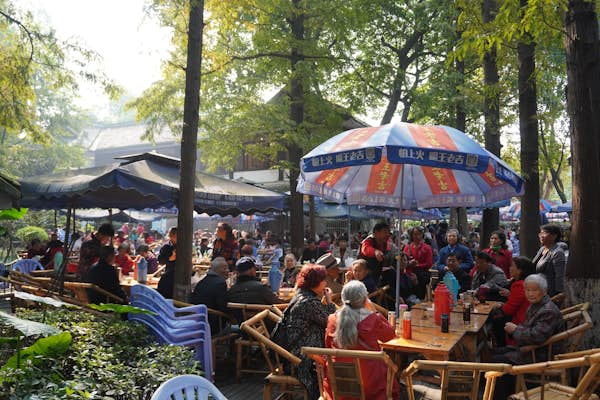Embark on a culinary journey through China, a land where food tells a story of its rich culture and history. Each region offers unique flavors that captivate your taste buds. Discover street food gems and traditional dishes that reflect centuries of tradition and innovation.
In the bustling streets and tranquil tea houses, you’ll find an array of mouthwatering options. From sweet to savory, these dishes invite you to explore China’s diverse food scene. Let this guide be your compass in navigating the country’s culinary delights.
In Chengdu, discover ye’er ba, a delightful street food that varies in flavors. Wrapped in leaves and filled with sticky rice, these parcels often contain minced pork or sweet fillings. Try them at Zhong Shui Jiao, a hotspot for Chengdu’s culinary treasures.
Hangzhou’s Longjing tea prawns are a signature dish. Fresh prawns stir-fried with young tea leaves create a blend of sweetness and earthy flavors. Lv Cha Can Ting, located by a serene lake, is the ideal spot to taste this delicacy. Enjoy the harmony of tea and seafood.
Xi’an offers a sweet treat with its persimmon cakes, made from wheat flour pastry and filled with sweet pastes like sesame and red bean. They’re best when freshly fried for a chewy texture. Street stalls in the Muslim Quarter are perfect for sampling these delights.
Shaoxing’s drunken chicken is a dish with a twist. Marinated in rice wine, the chicken offers a burst of flavor. Poached with ginger, this appetizer is an unforgettable taste experience. Xun Bao Ji is the place to explore this city’s wine-infused cuisine.
Guilin’s osmanthus cakes, named after the fragrant flower, are a local favorite. Made with rice flour, they crumble like cookies but boast a unique floral taste. Visit Zhengyang Street to find the best versions from Li Yuan’s famous pastry shop.
Yangzhou fried rice combines basic ingredients like egg and ham with luxurious additions like shrimp and scallops. The secret lies in using day-old rice for perfect separation. Wu Xing Ji offers this culinary masterpiece in its best form.
Beijing hot pot is a communal tradition focusing on lamb and mutton. Shuan yang rou, as it’s called, involves quick dips in boiling water and a rich sesame paste dip. This flavorful experience awaits you at Nan Men Shuan Rou, where each diner has a personal pot.
Baijiu, a potent Chinese spirit, is an essential part of any celebration. Sipped from small cups, it enhances social gatherings with its varied grain flavors. Visit Shuijingfang Museum in Chengdu for a deeper understanding and tasting of this powerful beverage.
Vegetarian and vegan food in China is influenced by Buddhism. Finding vegetarian dishes is easy, especially in cities, but vegans should specify their needs. Translated cards detailing dietary restrictions are helpful.
Chinese cuisine often aligns with traditional festivals. For example, ‘nian gao’ is a sticky rice cake enjoyed during Chinese New Year. Meanwhile, mooncakes mark the Mid-Autumn Festival. These seasonal treats connect food with cultural celebrations.
China’s culinary landscape is as vast as its geography. Each dish tells a story of its cultural roots, inviting you to explore and savor. Whether it’s the comforting warmth of a hot pot or the delicate flavors of tea prawns, China’s food scene is a journey worth taking.





